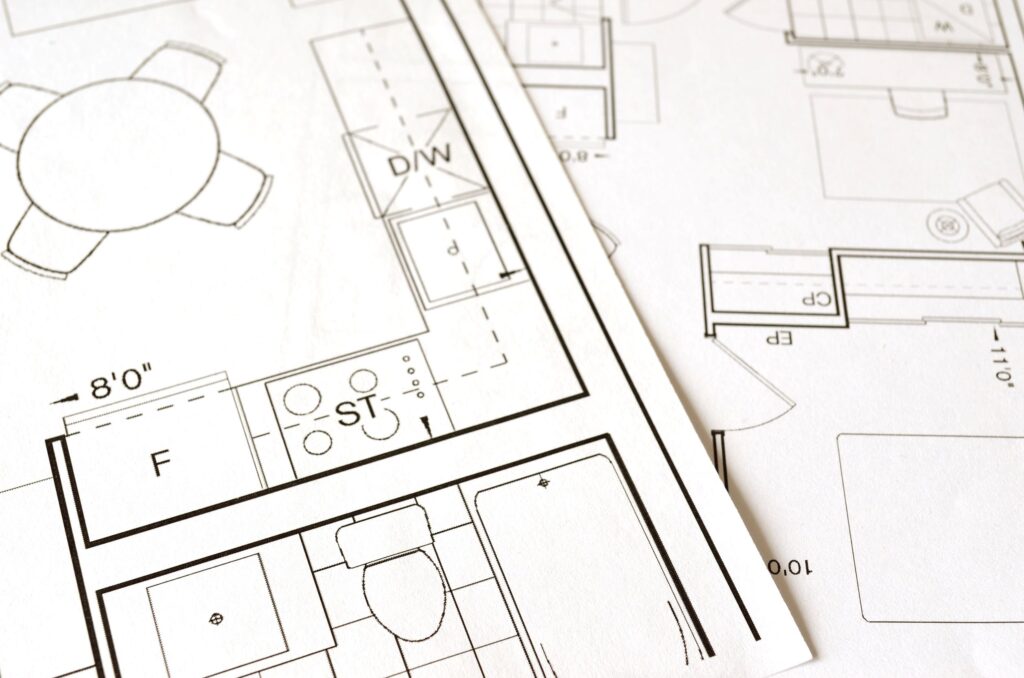Your freelance shop window
Entering the freelance world of interior design, you have your interior design business name, your price point, you’ve invested in the hard and software needed, and you are starting to network with other interior designers…only one more thing remains…
…your portfolio…

In our final blog on ‘How to be a Freelance Interior Designer’, we look at portfolios and will be giving you top tips on how to organise and present your portfolio to make it stand out from the crowd.
All your own work…

Interior Designers can live or die by their portfolios!
There’s no one-size-fits-all approach to this question, or any hard or fast rules but there are a few top tips that will set you on the right path.
A key idea when creating a portfolio for freelance work is to get into the habit of asking yourself:
- What impression am I trying to convey?
- What are my potential clients interested in?
- How can I clearly showcase my skills and most importantly what would make them want to work with me?
An evocative portfolio is an instant hook for me. It should read like a book, with a beginning, middle and end. If you are just starting out, then it should show the progression of your skills. If you have some years under your belt, then you ideally are showing off either your niche style (if you have identified that) or… and wide range of drawings and photo’s identifying the breadth the projects you have covered.
Each chapter being a mini-story of its own…
Start with hand sketches, then AutoCAD, then 3D modelling. Add vignettes of your styling skills. Even if you are just starting out – I always suggest dressing your own apartment to showcase your flair and touch. (Buy cushions and throws from a well-known retailer, dress the room, take the awesome shot and then take the cushions back! In excellent condition of course.))
Don’t make your portfolio too long, though…
We are talking a holiday read, not a weighty tome! 30 pages is somewhat excessive, so when starting out aim for 10-12 pages max! And make them a standard page size (A4 or A3): if you use Canva or Powerpoint to put your portfolio together, you can standardise the layout size.
White backgrounds are always solid…
They make your images pop and save your prospective client a fortune when they print them out to show a colleague!! Always brand every single page (your name or brand or logo) and, simple I know, but please number them too.
Your project work must absolutely shine…
If you are showcasing a particular project, set out the brief and show how you addressed it; some bullet-point notes on projects would always be helpful. If you have an area you are particularly interested in, then promote it. There is no point in presenting pages and pages of commercial projects if you really hated designing them!
Conceptual stuff should be big, bold and colourful…
Choose maybe two favourite concept boards to a page and make your images big and clear. Again, Canva or Powerpoint can be helpful in creating an initial presentation/concept board – be practical and think backwards – buy the products and then create the concept board to reflect it.

Interior Designers want to know exactly what type of drawings you can do: i.e general arrangement plans; detailed, rendered and annotated bathroom elevations for construction. Amazing visuals and good clear, crisp drawings are a big seller.
AutoCAD drawings speak for themselves so can be used as single images that are self-explanatory. If you want to include FFE Specifications and Project Timelines, you could consider creating a blend: have a drawing or plan on one page and then the next page could be the corresponding timeline etc.
Show you can turn the conceptual into reality. Soft furnishings are always evocative of how schemes will work, so include fabric schemes and samples. Take photos of physical sample boards or materials such as brassware, or marble for a bathroom.
Your front cover should be clear and clean and captivating, enticing your audience in. Your back cover should have all your contact details on.
Look at everything you have, pull out the best and think, ‘How can I tell a story? How can I tell my story?’
And finally…
Starting out on your own as a Freelance Interior Designer is an exhilarating time, and equally nerve-wracking. Be reassured – nerves are normal and will last a while until you get into your stride as you undertake more projects. Don’t be overwhelmed by them – harness the energy, transform it into a positive emotion and use it to drive you. This is an exciting new chapter in your life: embrace it and celebrate it! You’ve got this!
Remember if you need any further advice, support or mentoring, please contact me, Siobhan Casey, at Metier Rendezvous for further details of our mentoring programme or our different levels of membership that can help assist you in your journey as a Freelance Interior Designer.
If you haven’t had the chance to read the first two parts of our blog series, please do flip back there now … and be sure to read our advice on how to get started (Part 1), how to price yourself and how to get yourself known. (Part 2)
Metier Rendezvous is a peer support network for Interior Designers in the UK and around the world!
We provide day-to-day pro-active and friendly support for all our members.
Collaboratively, which many find hard to believe, we believe in Community over Competition.
We share business ideas, tips, brainstorm on projects together as well as forward on leads.
Why not find out why Interior Designers love being a Metier Member!
If you would like to chat with me and find out more if Metier Rendezvous might be the right fit for you – then register your interest for membership here and we can book in a free and friendly chat, where you can share with me a little about how your Interior Design career is going and I can share with you what Metier Rendezvous is all about.